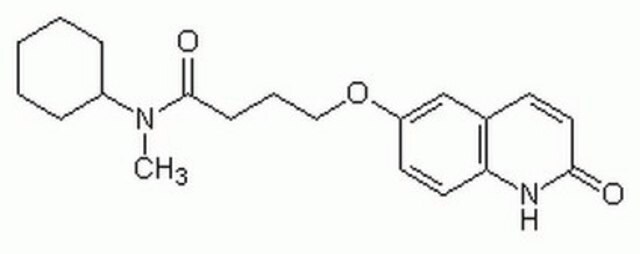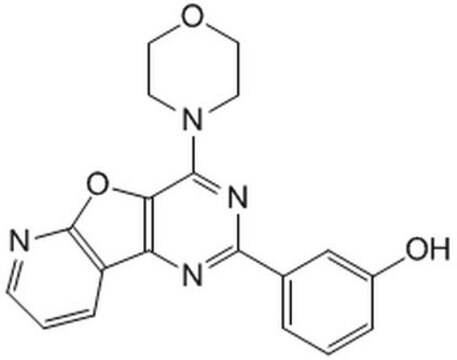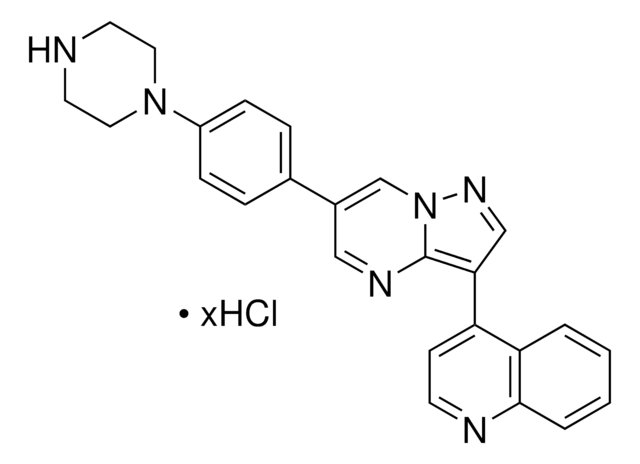528100
PI-103
A cell-permeable pyridinylfuranopyrimidine compound that acts as a potent and ATP-competitive inhibitor of DNA-PK, PI3-K, and mTOR.
Sinónimos:
PI-103, 3-(4-(4-Morpholinyl)pyrido[3ʹ,2ʹ:4,5]furo[3,2-d]pyrimidin-2-yl)phenol, mTOR Inhibitor V, PI 3-K Inhibitor V
About This Item
Productos recomendados
Quality Level
assay
≥97% (HPLC)
form
solid
manufacturer/tradename
Calbiochem®
storage condition
OK to freeze
protect from light
color
white
solubility
DMSO: 5 mg/mL
shipped in
ambient
storage temp.
−20°C
SMILES string
N5(CCOCC5)c1nc(nc3c1[o]c4ncccc43)c2cc(ccc2)O
InChI
1S/C19H16N4O3/c24-13-4-1-3-12(11-13)17-21-15-14-5-2-6-20-19(14)26-16(15)18(22-17)23-7-9-25-10-8-23/h1-6,11,24H,7-10H2
InChI key
TUVCWJQQGGETHL-UHFFFAOYSA-N
General description
Biochem/physiol Actions
DNA-PK, PI3-K, and mTOR
Packaging
Warning
Preparation Note
Legal Information
Storage Class
11 - Combustible Solids
wgk_germany
WGK 3
flash_point_f
Not applicable
flash_point_c
Not applicable
Certificados de análisis (COA)
Busque Certificados de análisis (COA) introduciendo el número de lote del producto. Los números de lote se encuentran en la etiqueta del producto después de las palabras «Lot» o «Batch»
¿Ya tiene este producto?
Encuentre la documentación para los productos que ha comprado recientemente en la Biblioteca de documentos.
Artículos
AldeRed™ 588-A is a red fluorescent live cell probe that detects ALDH activity used to identify cancer stem cells and progenitor cells in culture. Cancer stem cells (CSCs) are subpopulations of cancer cells that can self-renew, generate diverse cells in the tumor mass, and sustain tumorigenesis. Some researchers believe that cancer arises from cancer stem cells that originate as a result of mutational hits on normal stem cells.
Nuestro equipo de científicos tiene experiencia en todas las áreas de investigación: Ciencias de la vida, Ciencia de los materiales, Síntesis química, Cromatografía, Analítica y muchas otras.
Póngase en contacto con el Servicio técnico







